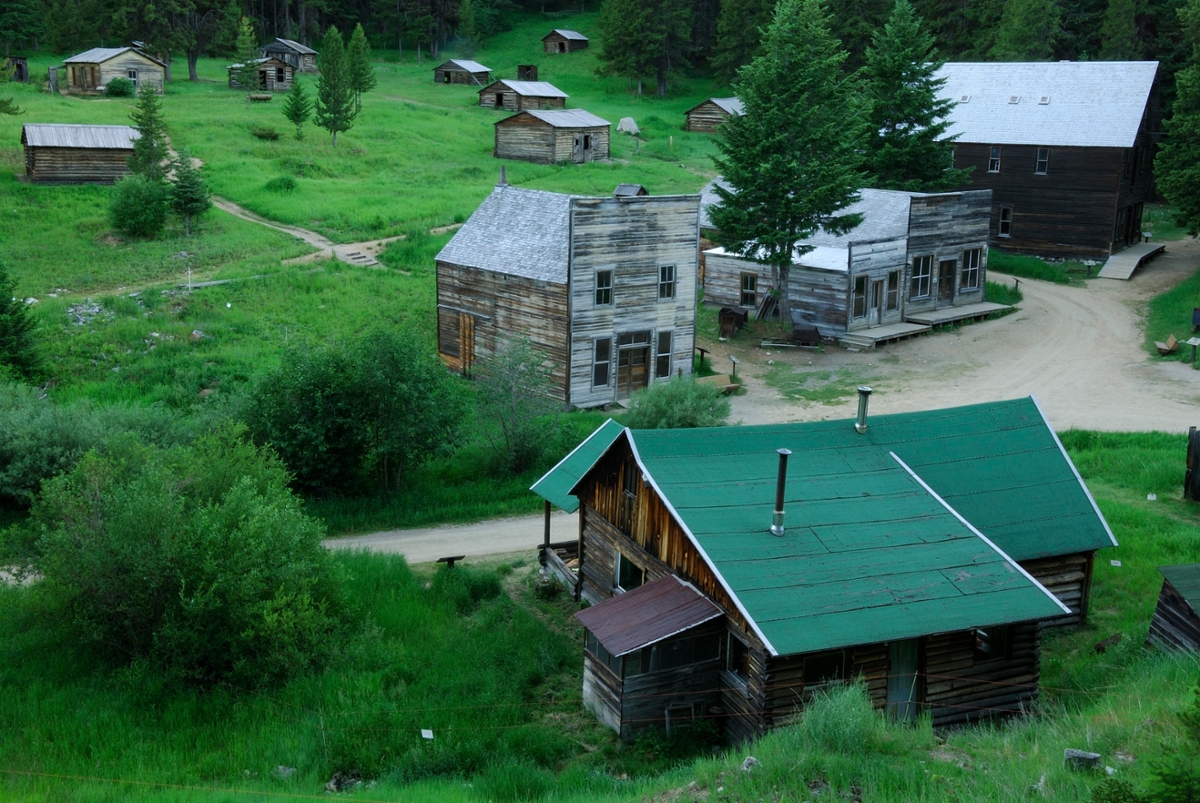Garnet Offers Montana's Best Preserved Ghost Town
 Much of Garnet Ghost Town remains intact. (Photo by J.W. Newton)
Much of Garnet Ghost Town remains intact. (Photo by J.W. Newton)
It’s quiet now, especially when heavy snows descend on the Garnet Mountain Range. More than 120 years ago though, Garnet was a boisterous place, going full blast even in the harsh winter months. Its main link to the lower elevations was a rough and somewhat torturous road that led south along Bear Creek to Bearmouth on the Clark Fork between Drummond and Missoula.
The old town is part of a mining district that covered an extensive area of these mountains. Placer gold was first discovered in 1865 on Bear Creek’s lower reaches, giving birth to short-lived Beartown. Garnet, site of the “mother lode,” didn’t come along until 1895, 30 years after the first placer diggings.
Gold is heavy and usually filters down to bedrock. At Bear Creek, bedrock was, in some places, 50 feet below ground level. Getting to the treasure was difficult. Bear Gulch was tight, hemmed in by rock walls rising more than 1,000 feet above the creek bottom, and water drained into the shafts as they became deeper. The initial prospectors toiled arduously to take the fortune in gold that came from the Bear.
The miners prevailed, and once all the Bear Creek claims were connected, one could walk 10 miles through the trenches of the gulch without coming to the surface. The men who worked these claims were called “Bear Town Toughs” and took on a bear-like appearance with beards, bowed legs and a stooped back.
Before Garnet came into being, an estimated 5,000 people populated the nearby camps, including Reynolds City, 10 Mile on 10 Mile Creek and Top O’Deep on Deep Creek above Beartown. Within three years though, much of the placer gold played out, and by 1868 folks were leaving. Silver discoveries elsewhere in Montana were beckoning them.
However, in 1893, the Sherman Silver Purchase Act was repealed, resulting in the closure of silver mines and thousands of men were put out of work. As the unemployed miners searched for new jobs, the Garnet Mountains came back into focus.
In 1895, at the head of First Chance Gulch and the Garnet townsite, Dr. Armistead Mitchell constructed a stamp mill to crush ore, and a town was born. The new community first took on Mitchell’s name, but in 1897 it was changed to Garnet for the brown garnet found along the contact zone of granodiorite and limestone rocks of the area.
Sam Ritchey found rich ore in his Nancy Hanks Mine, just above the town’s main street. A new gold rush, centered around hard rock mining, was now underway, and by January of 1898, the town boasted 1,000 residents, a school, four hotels, a doctor’s office, 13 saloons and four stores, among other enterprises. Twenty mines were in operation.
More interested in getting the riches out of the ground than planning sturdy houses, the town was shabbily and hurriedly built. Oftentimes, people’s homes were located on mining claims and constructed on corners of piled rock without foundations. It wasn’t unusual for someone to come home to see a mineshaft being started in their front yard.
Gold isn’t forever, and during the early 1990s the yield began to diminish. It also became too expensive to continue mining. By 1905, many of the mines were abandoned and only 150 people were left living in Garnet. A 1912 fire destroyed many of the buildings, further adding to the decline.
All told, by 1917, based on $16 an ounce, about $950,000 worth of the yellow metal had been extracted from the Garnet claims. Today’s prices in the $1,200 per ounce range would make the value about $71 million.
In the mid-’30's when the price of gold rose to $32 an ounce, Garnet briefly came back to life, and some of the former mines and dumps were reworked. But World War II took the workers away again, and Garnet became a ghost town for good.
In the ensuing years, the buildings deteriorated and heavy winter snows and vandalism took their toll. In 1971, the Bureau of Land Management stepped in to save the town. The federal agency formed a partnership with the nonprofit Missoula-based Garnet Preservation Association, and together they have done a masterful job keeping this great piece of Montana’s heritage intact. Their management plan states, “... a minimalist approach will be used in the preservation of historic buildings and structures ... Any changes shall not be so extensive so as to create a false sense of historical development.”
As a result of their hard work, today Garnet is Montana’s best-preserved ghost town. For more information contact the BLM Missoula office at 406-329-3914.
Rick Graetz | Department of Geography | University of Montana
